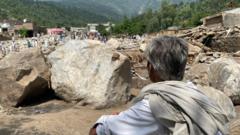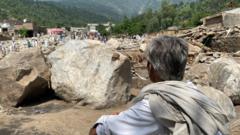Athens is turning to Hadrian's Aqueduct, a Roman-era engineering marvel, to combat current water scarcity exacerbated by climate change, while implementing modern water sourcing initiatives.
Reviving Ancient Solutions: Athens Restores Hadrian’s Aqueduct Amid Water Crisis

Reviving Ancient Solutions: Athens Restores Hadrian’s Aqueduct Amid Water Crisis
Athens faces severe water shortages due to climate change, prompting a revival of its historic aqueduct for sustainable water management.
On December 7, 2024, Athens is grappling with record heat and reduced rainfall, leading to drastic drops in water levels in its reservoirs— the lowest in over a decade. Farmers find it challenging to cultivate their crops, wildfires have increased, creating higher demand for water, and local priests are holding ceremonies praying for rain. In response, Athens is investing in both modern solutions such as artificial lakes and desalination plants, along with a more historic endeavor: revitalizing Hadrian's Aqueduct that has fed water to the city since the Roman Empire.
The last twenty years have seen the aqueduct largely neglected, but following a collaborative effort between the Athens Water Supply and Sewerage Company, cultural authorities, and local officials, its functionality is being restored. Katerina Dimitrou from the Water Supply and Sewerage Company expressed, “We have an ancient monument and feat of engineering that we’re bringing into the present to save water and cool the city.”
The project aims not just to replenish water supplies but also to invigorate green spaces across the city, inherently helping to lower the urban heat. The initiative is part of a broader ambition to instill a new water culture within the city, integrating awareness and sustainable practices into the community’s daily life.
The aqueduct, which stretches over 15 miles under Athens, consists of submerged passages and traditional stone structures dating back to Hadrian's reign. As droughts become more frequent and intense due to global warming, Athens recognizes the confluence of ancient wisdom and modern necessity in addressing the urgent challenge of water management. The revival of this infrastructure reflects a commitment to sustainability while paying homage to the engineering expertise of the past, melding tradition with modern needs.
The last twenty years have seen the aqueduct largely neglected, but following a collaborative effort between the Athens Water Supply and Sewerage Company, cultural authorities, and local officials, its functionality is being restored. Katerina Dimitrou from the Water Supply and Sewerage Company expressed, “We have an ancient monument and feat of engineering that we’re bringing into the present to save water and cool the city.”
The project aims not just to replenish water supplies but also to invigorate green spaces across the city, inherently helping to lower the urban heat. The initiative is part of a broader ambition to instill a new water culture within the city, integrating awareness and sustainable practices into the community’s daily life.
The aqueduct, which stretches over 15 miles under Athens, consists of submerged passages and traditional stone structures dating back to Hadrian's reign. As droughts become more frequent and intense due to global warming, Athens recognizes the confluence of ancient wisdom and modern necessity in addressing the urgent challenge of water management. The revival of this infrastructure reflects a commitment to sustainability while paying homage to the engineering expertise of the past, melding tradition with modern needs.




















